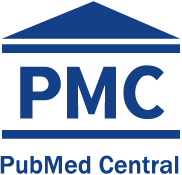Institutional differences in the ineffective access to prescription medication in health care centers in Peru: analysis of the National Survey on User Satisfaction of Health Services (ENSUSALUD 2014)
DOI:
https://doi.org/10.17843/rpmesp.2016.332.2197Keywords:
Drug prescriptions, Equity in access, Universal access to health care services, Health care quality, access, and evaluation, poverty, PeruAbstract
Objectives. To estimate the prevalence of ineffective access to drugs (IAD) and associated factors in patients receiving a prescription in an outpatient clinic in Peru. Materials and Methods. We performed a secondary data-analysis of the National Survey on User Satisfaction of Health Services (ENSUSALUD 2014), a two-stage population-based study carried out in health care centers of the Ministry of Health and Regional Governments (MOHRG), Social Security (EsSalud), Armed Forces and Police (AFP) and the private sector across all 25 regions of Peru. IAD was defined as incomplete or no dispensing of any prescribed medication in the health care center pharmacy. Generalized linear models with Poisson distribution for complex survey sampling were fit to estimate prevalence ratios (PR) and 95% confidence intervals (CI). Results. Out of 13,360 participants, 80.9 % (95% CI: 79.9-81.8) had an active prescription, and of those, 90.8 % (95% CI: 90.1-91.6) sought their medications in a health care center pharmacy, where 30.6 % (95% CI 28.8-32.4) had IAD. In the multiple regression model, receiving medical attention in the MOHRG (PR 4.8; 95%CI: 3.5-6.54) or AFP (PR: 3.2; 95%CI: 2.3-4.5), being over 60 years old (PR: 1.17; 95%CI: 1.04-1.34) and being in the poorest income quintile (PR: 1.05; 95%CI: 1.05-1.41) increased IAD. Furthermore, in contrast to seeking care for pregnancy or other routine control, IAD was also more common for medical consultation for diseases diagnosed in the last 15 days (PR: 1.37; 95% CI: 1.05-1.79) or more than 15 days prior (PR: 1.51; 95% CI: 1.16-1.97). Conclusions. In Peru, IAD is associated with the provider institution, older age, poverty and the reason for medical consultation. We suggest strategies to promote access to medicines, especially in the most disadvantaged segments of the Peruvian population.Downloads
Download data is not yet available.
Downloads
Published
2016-06-03
Issue
Section
Original Article
How to Cite
1.
Mezones-Holguin E, Solis-Cóndor R, Benites-Zapata VA, Garnica-Pinazo G, Márquez-Bobadilla E, Tantaleán-Del-Águila M, et al. Institutional differences in the ineffective access to prescription medication in health care centers in Peru: analysis of the National Survey on User Satisfaction of Health Services (ENSUSALUD 2014). Rev Peru Med Exp Salud Publica [Internet]. 2016 Jun. 3 [cited 2025 Apr. 1];33(2):205-14. Available from: https://rpmesp.ins.gob.pe/index.php/rpmesp/article/view/2197





























